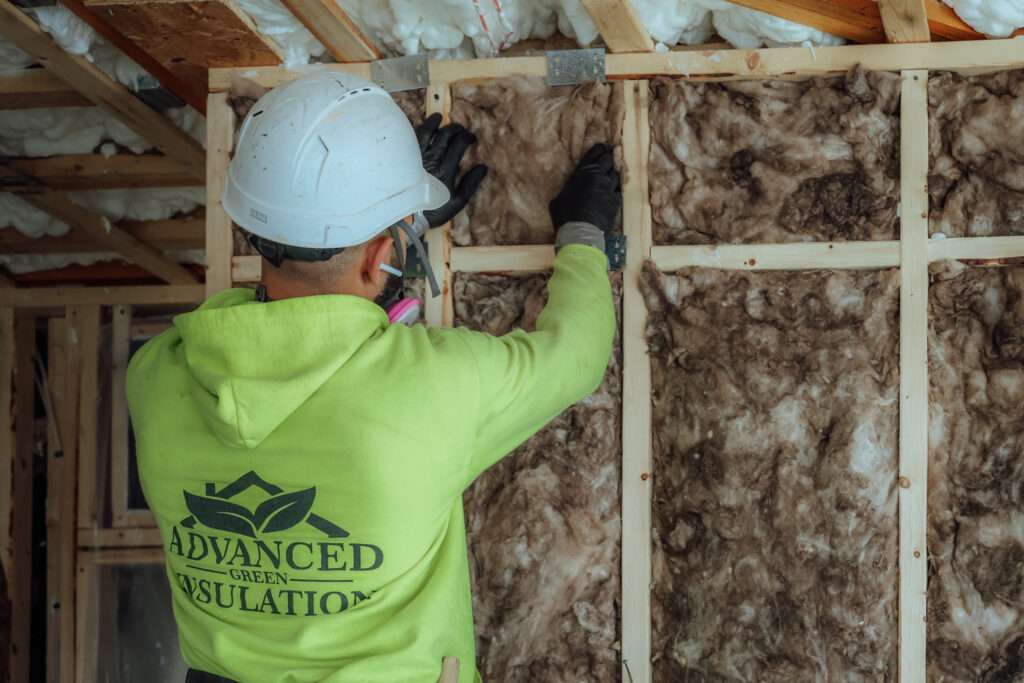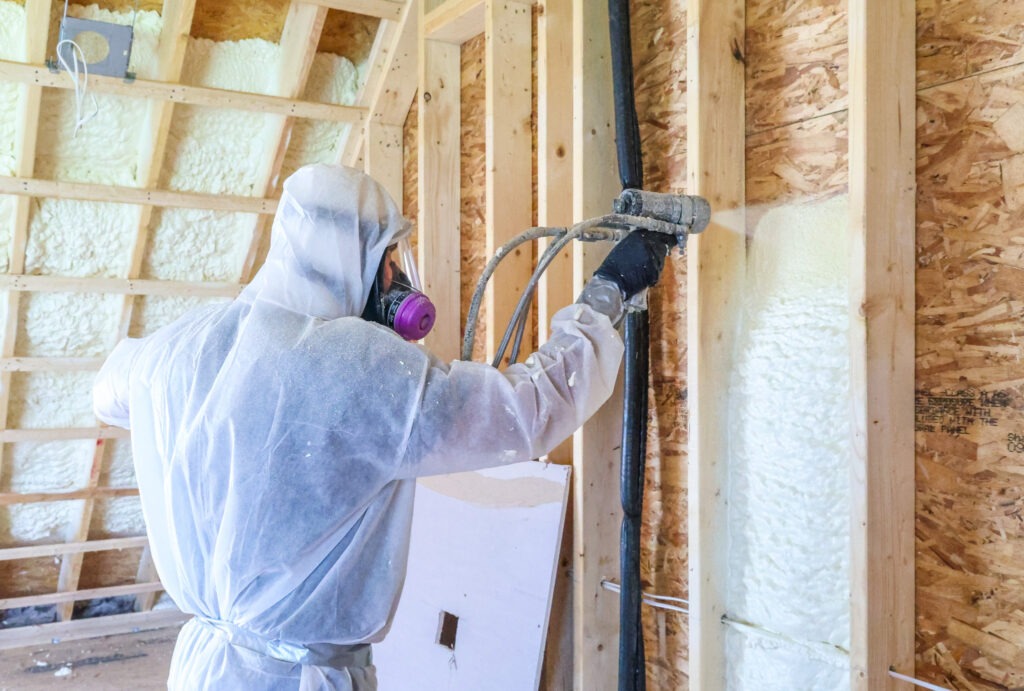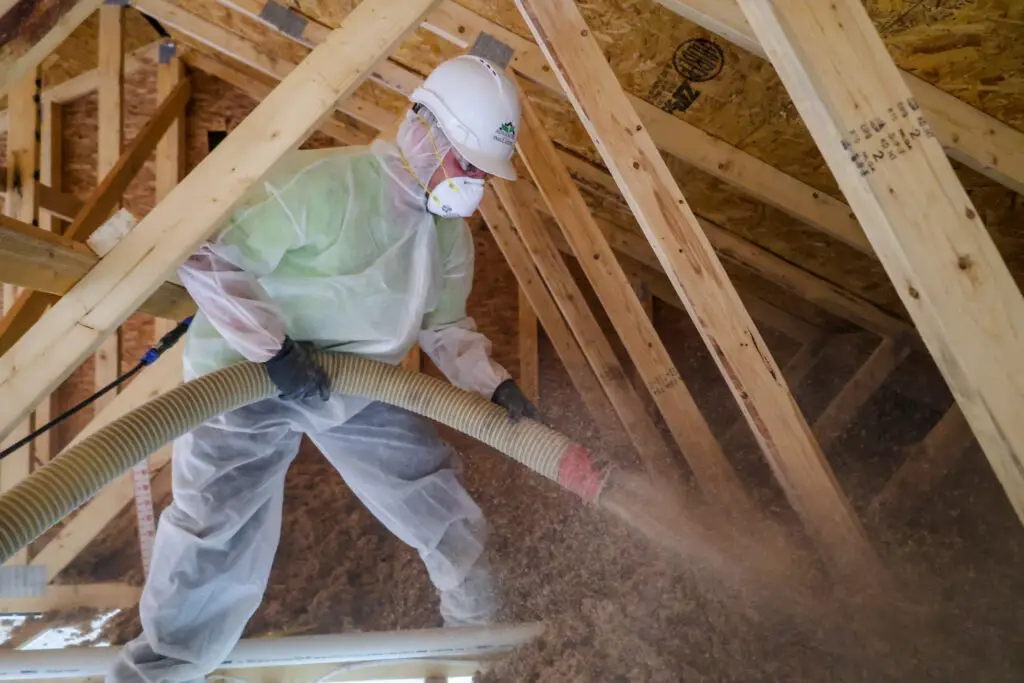Insulation plays a crucial role in keeping your home comfortable and energy-efficient, but how does it work? Whether you’re building a new house or upgrading your current insulation, understanding the science behind it can help you make informed decisions. In this guide, we’ll break down the basics of insulation, from how it works to its various types, and why it’s key to saving energy and money.
Understanding Heat Transfer
To understand how insulation works, it’s essential to know about heat transfer. Heat naturally flows from warmer areas to cooler ones until there’s no temperature difference. In your home, this means that heat moves from warm spaces (inside during the winter, or outside during the summer) to cooler ones. Insulation slows this process down by reducing heat transfer by creating an envelope around your home helping maintain the desired temperature inside your home, leading to a more comfortable environment.
Types of Insulation
At Advanced Green Insulation, we offer a wide range of insulation solutions to your home’s specific needs. Here are the types of insulation we specialize in:
Open-Cell Spray Foam: A lighter, more flexible option that is excellent for interior walls and hard-to-reach areas, providing soundproofing and temperature balance.
Closed-Cell Spray Foam: Denser and more rigid, this type offers higher R-values and acts as both an insulator and air sealant, making it ideal for basements, crawl spaces, and exterior walls.
- Fiberglass Insulation: A cost-effective and versatile option made from fine glass fibers. It’s commonly used in attics, walls, and floors to provide excellent thermal and sound insulation.
- Blown-In Cellulose: Made from recycled paper, blown-in cellulose is eco-friendly and great for filling irregularly shaped spaces. It’s often used in attics and walls to provide seamless coverage and improve energy efficiency.
- Mineral Wool Insulation: Known for its fire resistance and soundproofing qualities, mineral wool is ideal for insulating walls, ceilings, and floors. It’s made from natural stone and recycled materials, offering excellent durability.
- Wood Fiber Insulation: A sustainable, eco-friendly choice, wood fiber insulation is perfect for those looking to reduce their environmental impact while still benefiting from solid thermal and acoustic performance.
- Foam Board Insulation: Rigid panels that offer high insulation values with minimal thickness. Foam board is used for insulating foundations, walls, and roofs where space is limited but energy efficiency is a priority.
- Building Fireproofing: In addition to insulation, we offer specialized fireproofing solutions for buildings, helping to protect your building from fire hazards and comply with safety regulations.
These insulation types are designed to meet the unique needs of your project, providing energy efficiency, soundproofing, and fire protection. Depending on your specific requirements, our experts can recommend the best insulation solution for your project.
R-Value Explained
When choosing insulation, you’ll often see something called an “R-value.” But what is it, and why is it important? The R-value measures how well a material resists the flow of heat, with higher R-values providing better insulation. Different regions of the country require different R-values based on climate, so it’s essential to check your local building codes or consult with a professional to ensure you’re using the right insulation for your home.
How Insulation Saves Energy
Insulation works by creating a thermal barrier between your home and the outside environment. By slowing heat transfer, insulation reduces the amount of energy needed to heat or cool your home. In the winter, it keeps warm air inside, and in the summer, it keeps hot air out, leading to lower energy bills and less strain on your HVAC system. According to the U.S. Department of Energy, proper insulation can reduce your heating and cooling costs by up to 20%.
Insulation and Soundproofing
In addition to regulating temperature, insulation also plays a role in soundproofing your home. Insulating materials, especially those with a dense structure like fiberglass and mineral wool, help reduce noise transmission between rooms and from outside. If you live in a noisy area or want to minimize sound between floors, proper insulation can make a significant difference in your home’s acoustics.
Insulation is more than just a material stuffed into your walls or attic; it’s a critical component of your home’s energy efficiency and comfort. By understanding how insulation works—through slowing heat transfer, choosing the right type, and maximizing your R-value—you can make smarter decisions about keeping your home warm in the winter, cool in the summer, and energy-efficient year-round.
Looking to upgrade your insulation? Contact Advanced Green Insulation today for a consultation and learn how we can help keep your home comfortable and energy-efficient all year long. Follow our social networks



